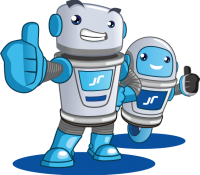
As with any area of business, human resources needs to constantly innovate and progress. Playing such a central and critical role in the overall success of an organization, it is imperative that HR personnel and business leaders pay careful mind to ensuring the processes, methods and workflows driving this segment of the company are optimized to offer the most benefit. However, it can be difficult to identify operational weaknesses – especially from an internal point of view.
But most of the issues you’re likely facing within your own company are ones commonly experienced by HR professionals at businesses of all size and scale, across nearly every sector. The difficulties organizations encounter today are a product and reflection of the times. In this age of innovation, many transformations and shifts are taking place, which can evoke a lot of anxiety, uncertainty and concern. And while this is common, it doesn’t mean it’s okay.
Below are the biggest hurdles hiring managers and human resources personnel face today – and some solutions for how to overcome them.
Repetitive Tasks
There’s a lot of information (read: paperwork) HR managers are responsible for. As this information accumulates, it’s easy to get bogged down by unnecessary tasks. If there’s a quicker, more efficient and effective way to work – why wouldn’t you want to take advantage of it? When employees are forced to waste time on tedious and time-consuming tasks, especially if those operations give them little sense of accomplishment or meaning, the work can indirectly hurt rather than help the organization. Of course, particularly when it comes to human resources, certain jobs simply have to get done. But that doesn’t mean the way the work gets done has to remain unchanged.
Ensuring Compliance and Minimizing Risk
Having a new administration in the White House can be concerning, since it presents the possibility of policy updates and regulatory changes that could usher in the need for an overhaul ore restructure of internal processes. Audits may have to be conducted and methods may have to be altered to ensure and maintain compliance. Even implementing stricter guidelines or practices can be a burden on HR professionals. Managing all your people – plus the associated paperwork – can be stressful, as even minor missteps or mistakes can have costly ramifications. This becomes all the more difficult to deal with if you’re being pulled in a million different directions at once.
This ties back to the issue of repetitive tasks and manual processes: Not only is having to manually input data into spreadsheets a waste of time – which could be better spent elsewhere on more critical areas of business – it also increases the likelihood of an error being made that could result in hefty fines or, at the very least, an inconvenience. When these processes are automated and integrated, it means that data is collected, combined and kept in a cohesive and connected environment that benefits both HR personnel and the organization as a whole. It also helps provide better accessibility, insight and visibility – all of which are needed to minimize risk and increase compliance.
Retention and Turnover
Low retention can sometimes be attributed to economic uncertainty and a tight job market. But there’s also the problem of poor talent acquisition practices combined with poor talent management methods. In addition to optimizing your recruitment and onboarding strategies to find quality candidates, it’s important to make sure you find people who are a good fit for the role and corporate culture. Otherwise, it’s more likely that the individual is going to turnover. Unfortunately, a common issue HR professionals face isn’t that they are unaware there is a turnover problem – it’s figuring out the root cause of it.
Is it because new hires end up learning that the company or role isn’t what they expected? Is it because of a poor onboarding experience? According to Forbes, 67 percent of full-time employees are either looking or open to new employment opportunities. Meanwhile, almost half of employers are struggling to fill available jobs and the majority of job seekers have agreed they have encountered poor candidate experiences.
Once the pain points are addressed for why you’re missing out on finding – and keeping – top talent, it makes it easier to implement the appropriate remedies. Furthermore, it’s easier to spend more time improving these initiatives when you’re not saddled with unnecessary tasks and redundant processes.

Investing in the Right Tools
Finally, one of the biggest hurdles HR managers deal with is trying to determine which technological investments to make – and when. It’s undoubtedly important to adapt and evolve in tandem with the times. However, prematurely adopting a new technology or system without a clear and sound plan can result in revenue loss, not to mention hamper productivity.
When you invest in an HR tool, technology or system, you should understand exactly which business issues it is going to help alleviate and resolve. Furthermore, you need to choose a solution that addresses your specific needs. What works for other companies may not for you. That said, you can be fairly certain you’re making a wise business investment decision if the tool does any of the following:
- Reduces or automates repetitive tasks
- Eliminates manual processes
- Increases accuracy and minimizes risk
- Breaks down silos and establishes a more integrated and connected HR environment
If it does not just one, but several – or even all – of the above, it’s probably a worthwhile investment.
To learn more about how the right software and automation tools can help improve HR efficiency and organizational success, contact JobRobotix today.
